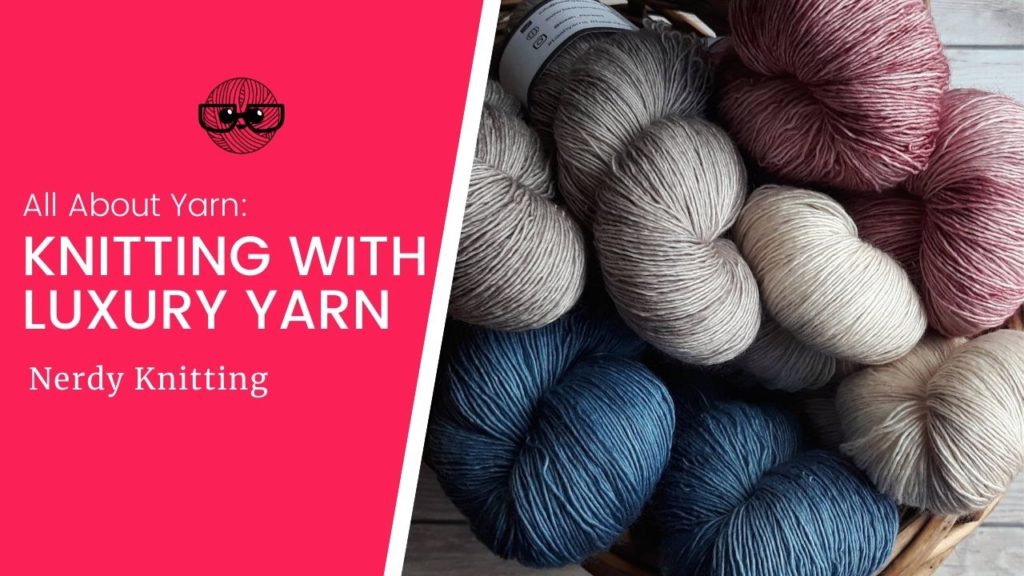While you may be familiar with common knitting fibers like wool, alpaca, acrylic, or cotton (and so many more), there are some less-common specialty luxury fibers that you can sometimes find in commercially-available yarns. We’ll take a look at knitting with some of these special luxury yarn fibers – Bison, Qiviut, Angora & Possum.
In this article we’ll learn all about knitting luxury yarns, including the following topics:
- A Look at Bison, Qiviut, Angora & Possum
- Properties of Bison, Qiviut, Angora & Possum Yarns
- Knitting with Bison, Qiviut, Angora & Possum Yarns
- Caring for Finished Projects
- More Questions about Knitting with Luxury Yarns
Let’s dive deeper into each of these topics. Then you’ll know when one of these speciality luxury yarns is the right choice for your next knitting project.
Some links below are affiliate links. If you click through and make a purchase I may receive a small commission at no extra cost to you. See the disclosure policy for more information.
A Look at Luxury Yarns: Bison, Qiviut, Angora & Possum
Knitting fibers are divided into four general categories – animal fibers (like wool, silk, and alpaca), plant fibers (like cotton and linen), biosynthetic fibers (like rayon and bamboo), and synthetic fibers (like acrylic and nylon). Bison, qiviut, angora, and possum all fall within the animal fiber category – because they all come from animals. Bison and qiviut fall within the ‘specialty wool’ category because they are considered ‘wool’ but don’t come from sheep. Angora and possum are both fur (and not wool).
All of them are more expensive and more difficult to find in commercially available yarns so they are often considered luxury yarn fibers as well.
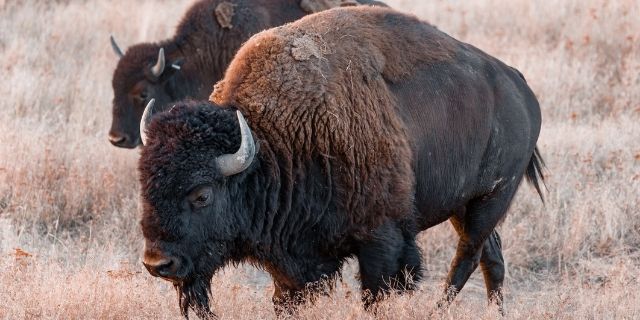
Bison Yarn
The American Bison has two coats – the coarse, shaggy outer coat the the fine, downy under coat that can now be found in commercially available yarns. And, while bison aren’t usually sheared for their fleece, it can be collected in one of two ways. The first is to collect it as its shed each year. The second is remove it from the hides of slaughtered bison (for meat production).
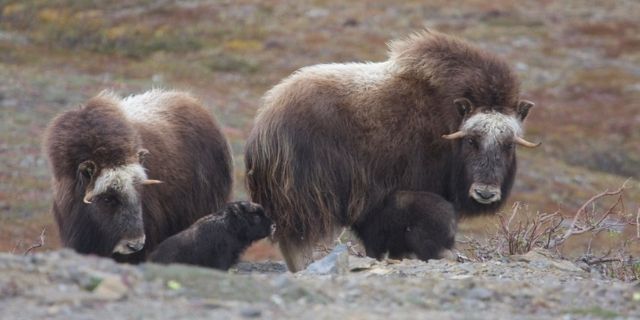
Qiviut Yarn
Qiviut yarn comes from the musk ox which is native to the Arctic but can now be found in North America. While the name might make you think it’s related to cattle, it’s actually more closely related to sheep and goats. It looks similar to an American Bison but is half the size. It is now domesticated but the fiber is not commonly found in commercially available yarn (and when it is it’s very expensive).
The musk ox has a shaggy outer coat and the under coat that’s used for knitting can be pulled from the under coat as its shed in the spring. They shed six or seven pounds of this under coat fiber in colors that come in a variety of brown hues.
Angora Yarn
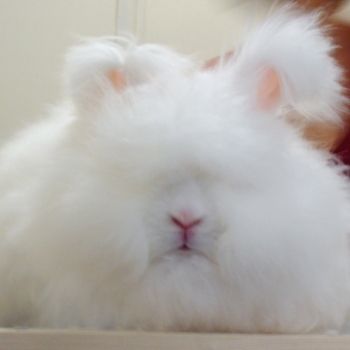
Angora and Possum both come from the fur of an animal – so they aren’t technically ‘wool.’
The Angora rabbit is where angora fur used for knitting comes from (NOT Angora goat – which is called mohair yarn). And, like the Angora goat, the Angora rabbit originally came from Turkey but is now commonly found all over the world, though the major producers of commercially available angora are in France and Germany.
For those who are interested in spinning their own yarns, Angora rabbits are like the gateway to a small farm – they are small and easy to keep and care for. It’s very common for hand spinners to raise their own Angora rabbits.
The highest quality angora is combed, not shorn (and this type is also less likely to shed). Both combed and clipped fur contains the down and guard hairs, which are removed from the down before spinning. The fibers are very short (1-4 inches long), so angora is difficult to spin. You’ll often find it blended with other fibers that are more easily spun into useable yarn.
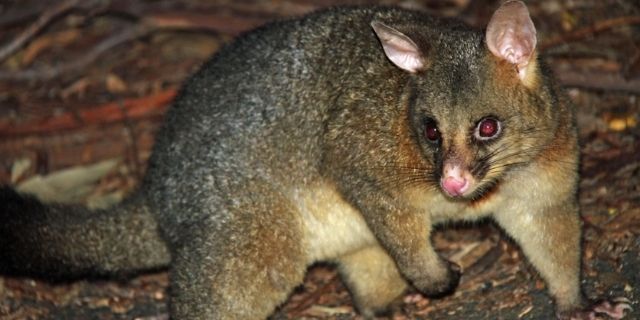
Possum Yarn
Possum yarn comes from the Brushtail Possum native to Australia. It was introduced to New Zealand in the 1800s where it has no natural predators which caused an imbalance in the ecological system of the country. It’s now considered a pest so there are campaigns to find ways to make them a useful resource. The fibers that are collected are short and fine (which, like other furs, makes them difficult to spin). Possum fur is usually spun with other fibers – very often blended with merino wool which is also common to the area.
Get the Yarn Substitution Checklist
Fill in the form below to get a free copy of the Four Step Checklist for substituting yarn. Use it for your next knitting project!
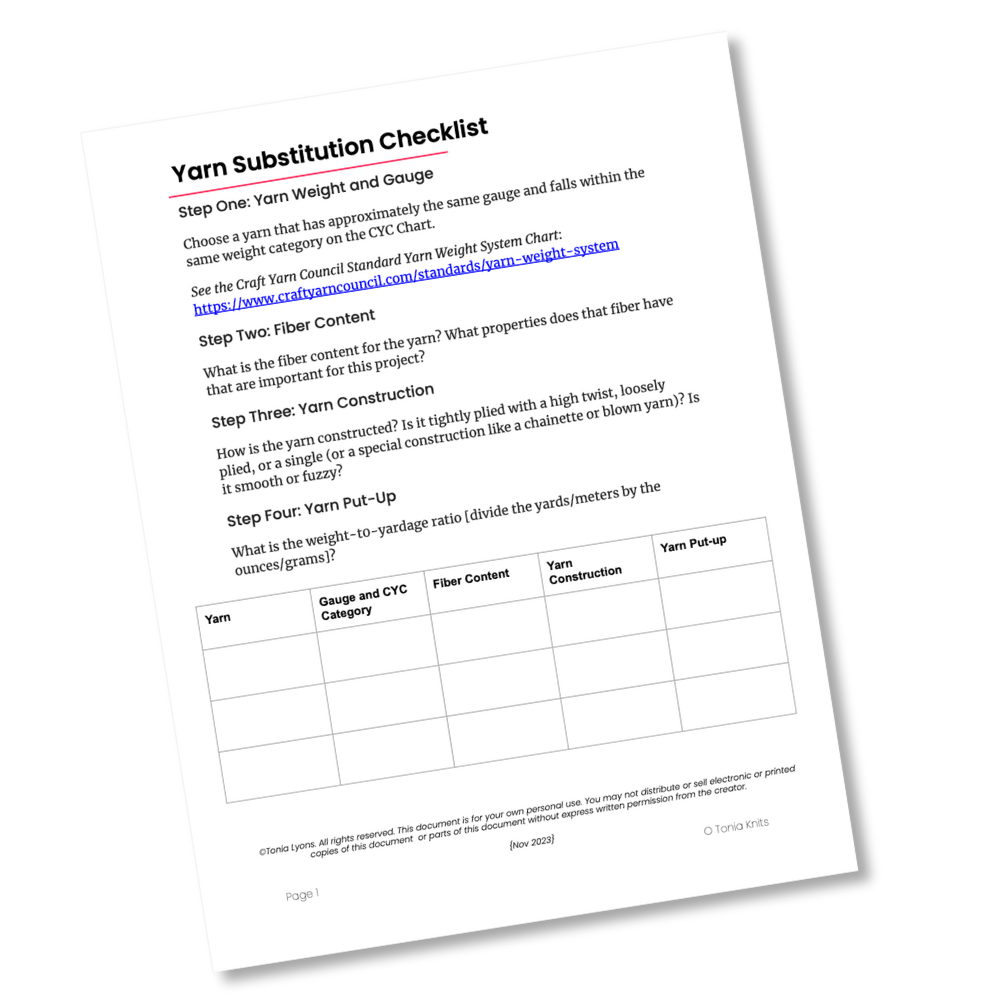
Properties of Bison, Qiviut, Angora & Possum Yarns
While bison, qiviut, angora, and possum fibers are all from vastly different animals, they share some similarities and common traits. They are all considered luxury fibers since they are not commonly found in commercial yarns and because they can be quite expensive. But if you do find yarns with some of these beautiful fibers, they are wonderful for knitting and have very few drawbacks.
Advantages of Bison, Qiviut, Angora & Possum Yarns
Bison and qiviut share some common traits – the fibers from the soft under coat of the bison and musk ox are both similar to cashmere (if you’ve ever knit with cashmere you know how soft that can be), warmer than wool (qiviut is actually eight times warmer than wool), very durable, and they don’t shrink.
Angora and possum furs also share some similar traits – they are both extremely soft, lightweight, and warmer than wool.
Disadvantages of Bison, Qiviut, Angora & Possum Yarns
In general, there aren’t many disadvantages to these specialty fibers. The one disadvantage is that they are all rare – which makes them expensive.
The angora and possum furs do have a few disadvantages because of their natural state. They are both short, soft fibers which makes them difficult to spin and also means that they are likely to shed (especially in a lightly spun yarn).
Angora is also prone to felting and has no elasticity.
Possum can’t be dyed so any yarn that uses the fur will have noticeable brown colouring, no matter the color of the other fibers in the yarn.
Knitting with Bison, Qiviut, Angora & Possum Yarns
Bison, qiviut, angora, and possum all feel soft and lovely as they are knit. Because they are so soft, this can translate to ‘slippery’ as you knit – especially if you’re using metal or slick, smooth needles. If you find that your stitches are slipping and sliding on your needles or you have uneven tension, you may want to switch to plastic, wood, or bamboo needles to give you more friction and ‘grip’ to hold the yarns in place.
Angora and possum will also shed or produce a soft halo as you knit because the fibers are so short and smooth. How much they shed will depend on which fibers they are blended with and how tightly the yarn was spun (the tighter the spin the less shedding and halo).
All of these fibers are rare and expensive and are best used for small accessories that won’t see much hard use. A soft cowl or hat would be beautiful in any of these fibers. Because of their tendency to halo (especially angora and possum), choose patterns that don’t require strong stitch definition. You won’t see your intricate stitch patterns as well with these soft, lofty yarns.
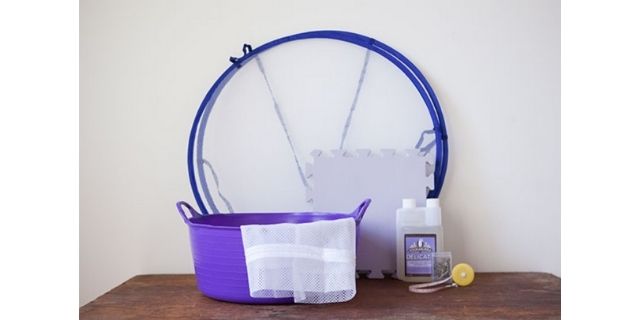
Caring for Finished Projects
Bison, qiviut, angora, and possum are all generally hand-washable (but read the care label for your yarn for specific instructions). Some bison yarns can be machine washed which will cause the fabric to bloom and have a halo. If you want to avoid that, you can hand wash and dry flat.
But they are all animal fibers so they can certainly get wet (animals are out in the weather after all – and bound to get rained on).
Hand washing: Fill a small basin with cool to lukewarm water and a little mild detergent. Submerge the garment in the liquid, carefully using your fingers to dislodge any stains. Let the garment soak for a few minutes (up to about 30 minutes, if you want).
To rinse the garment, hold it to one side of the basin as you drain the water and add fresh water. When you’re ready to dry the garment, lift it gently from the water and carefully squeeze out the water. Place the garment on a towel, roll it up, and press out the excess water.
Blocking Knitting Projects
Hand washing and then placing the finished project on a flat surface (on a mat or towel) is all you need to do in most cases – and it could actually be considered ‘blocking’ in the broadest sense of the term. But you can use pins and mats if you want to stretch the fabric – it just depends on your knitting pattern.
Wet-blocking: After washing and pressing out the excess water with a towel, place the garment on a dry towel or mesh sweater dryer and place it in its final shape, stretching any lace or other openwork designs to showcase them.
More Questions about Knitting with Luxury Yarns
While we’ve addressed everything you need to know to start knitting with these luxury yarn fibers, maybe you’re looking for a quick answer to a specific question. Here are some of the common questions people often have:
What is the difference between mohair and angora?
Angora fur comes from the Angora rabbit, originally from Turkey but now commonly found all over the world, though the major producers of commercially available angora are in France and Germany. Mohair comes from the Angora goat, native to Turkey but now commonly raised in South Africa and the United States.
Why is qiviut so expensive?
Qiviut, which comes from the musk ox that is native to the arctic region, is only collected when the musk ox sheds its soft under coat in the spring. Because the number of animals is limited, they are only located in a few places, and collecting the fiber is a laborious procedure, the resulting yarns are expensive.
How is bison wool harvested?
Bison wool is collected when the animal sheds it naturally or it can be sheared from the hides of bison that are killed for meat production.
What is the warmest wool in the world?
Qiviut, which comes from the musk ox, is the warmest wool in the world. It is eight times warmer than sheep wool.
Now you’re ready to introduce some of these specialty yarns into your knitting projects! If you’re looking for more information about various yarns, fibers, and fleeces, take a look at the resources and articles linked here:
More About Yarns & Fibers
- The Knitter’s Book of Yarn by Clara Parkes (available at Amazon)
- Yarn Substitution Made Easy by Carol J. Sulcoski (available at Amazon)
- The Fleece & Fiber Sourcebook by Carol Ekarius & Deborah Robson (available at Amazon)
- Luxury Yarn One-Skein Wonders by Judith Durant (available at Amazon)
